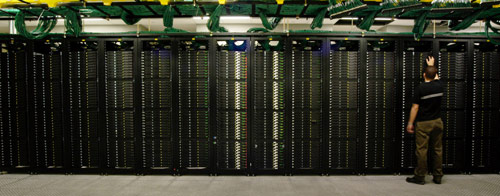So called “grid hosting” (or sometimes “utility computing”) is the latest buzzword in the Web hosting industry. It isn’t a new concept, grid computing has been around for quite some time, but has been repackaged for the Web hosting market. However, recent stability problems have raised the question if the technology is mature enough for the mass market.
The idea is to spread resources over a very large number of interconnected servers (a grid). The more servers there are in the grid, the more powerful it becomes. Lately, the most visible example has been Grid-Server from Media Temple, which was featured in a Tech Crunch article a while back.

Image: Imagine all these servers working together like one big, happy family.
What is grid hosting trying to deliver?
- Scalability. One highly touted aspect of grid hosting is its scalability. This scalability means that (in theory) grid hosting can handle anything from very small to very large online services and websites. This would mean that it could potentially replace both shared and dedicated servers, and that there would be no need for online services to migrate to “bigger and better” servers as they grow. This simplicity of having just one type of hosting account that you can grow with is a big plus.
- Only pay for what you use. Compared this to leasing a dedicated server, where in many cases you are paying for a lot more capacity than you actually use.
- Performance. On a shared hosting account you are affected by the other customers using the same webserver. Websites hosted on grid don’t have that problem since resources are distributed over the entire grid.
- Stability. Removing computers from the grid will not crash it, only make is slightly less powerful. With hundreds of servers working together, one server will not make much difference, and the stability of all sites hosted by the grid should be very high.
So what are the downsides?
Even though grid is supposed to provide more stability, the big downside is that if there are any general problems with the grid, it could affect all customers instead of just the ones on a specific webserver. In other words, any performance problems affect all customers.
Do they really deliver?
The big questions right now is if the technology is mature enough to deliver on the promises of scalability, stability and performance. The potential is definitely there, but we intend to set up a test in the near future to see if these solutions really live up to the hype. More on this later.
























